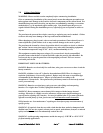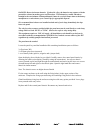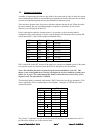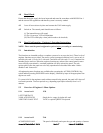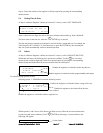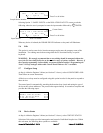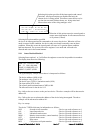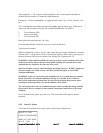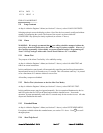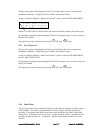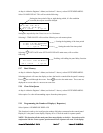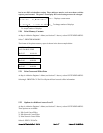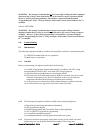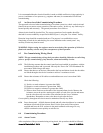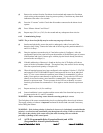
Document Ref: Nex8inst.doc/Rev0 09.07.00 Page 15 of 30 Originator MC Checked by AC__
The keypad keys 1, 2 & 3 become control switches for the 3 control panel command bits.
(Indicated by the numbers 123 under the CMD indicators).
Pressing key 1 causes command bit 1 to toggle between 0 and 1, key 2 for bit 2 and key 3 for
bit 3.
The 3 command bits have different purposes depending upon the device type. In the case of
smoke (ion and opt) and heat sensors, the command bit allocation is as follows:
1 Turn on Remote LED
2 Enter self test mode
3 Turn on Sensor LED
Break glass units respond to bits 2 & 3 only.
For command functions of other devices, refer to relevant literature.
Typical control example:
When a command bit is sent to a device, after a short delay, the status confirmation - returned
from the device - will be shown on the LCD. With the display as shown above, pressing key 3
turns on the sensor LED at device number 100. Pressing key 3 again turns it off.
WARNING: In the enabled condition the response of devices to the command codes will be
relatively slow due to the fact that the control panel is polling all connected devices and
command bits are required to be sent to the device twice.
When an ionisation sensor is tested, the display may briefly show an “ALERT” condition as
the sensor output rises. Other sensors react more quickly and appear to reach FIRE
condition immediately.
WARNING: If tests are carried out in the disabled mode, it is essential that the command
bits for each device be returned to 000 before moving on to another device. Failure to
observe this requirement will mean that, if a device has been left in the test mode, upon
returning to normal operation a fire alarm condition will be raised.
The control panel does clear the command bits upon return to normal operating condition
but the sensor devices respond too slowly and the control panel reads this as a fire alarm
condition.
To exit from the status option, press the # key. This returns the control panel to normal
operation.
5.8.2 Status To Printer
The format of the printed status report is shown in the short example below:
06/09/97 11:13:05
LOOP STATUS REPORT
ADR VAL TYPE ZONE
001 25 ION 1



